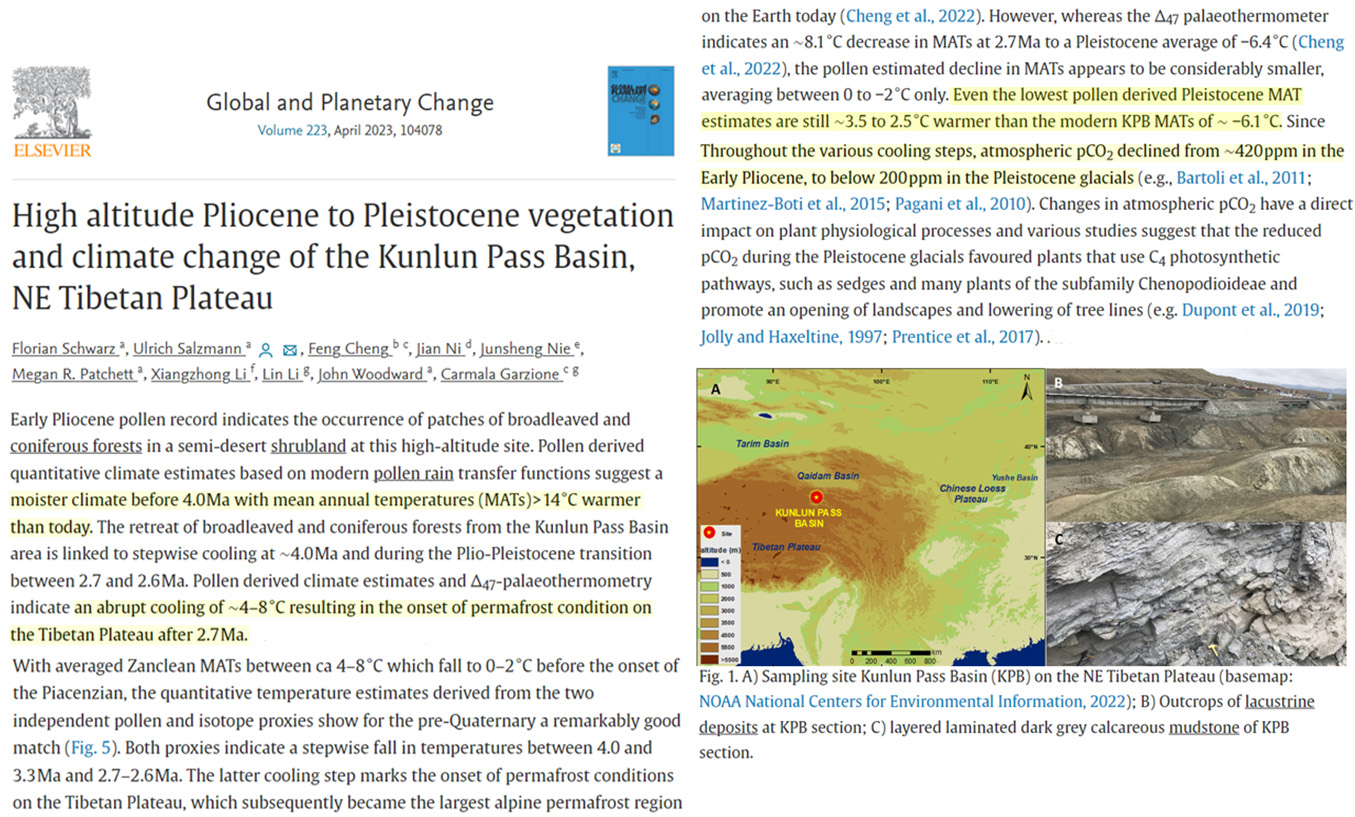“Even the lowest pollen derived Pleistocene MAT [mean annual temperature] estimates are still ∼3.5 to 2.5 °C warmer than the modern KPB MATs [Kunlun Pass Basin] of ∼ −6.1 °C.” – Schwarz et al., 2023
The Kunlun Pass Basin (KPB) in the northeastern Tibetan Plateau is the largest alpine permafrost region on Earth.
About 4 million years ago, during the Pliocene epoch, this location was permafrost-free. The mean annual temperatures (MAT) were more than 14°C warmer than they are today (Schwarz et al., 2023).
While scientists have sometimes claimed the higher Pliocene CO2 concentrations (~420 ppm) were at least partly responsible for this warmth, it is well established that CO2 concentration changes follow temperature changes by centuries to millennia in paleoclimate reconstructions (Fischer et al., 1999;Monnin et al., 2001; Caillon et al., 2003; Stott et al., 2007; Kawamura et al., 2007). Since causes cannot lag effects, this largely precludes CO2 as a driving mechanism for ancient temperature fluctuations.
To further clarify CO2 concentrations are not a climate driver, pollen records in the KPB indicate that even the lowest glacial temperatures and lowest CO2 concentrations (“below 200 ppm”) of the Quaternary ice age (last ~2.5 million years) were still “~3.5 to 2.5−°C warmer” than they are with today’s CO2 (~420 ppm) concentrations (Schwarz et al., 2023).






Recent Comments